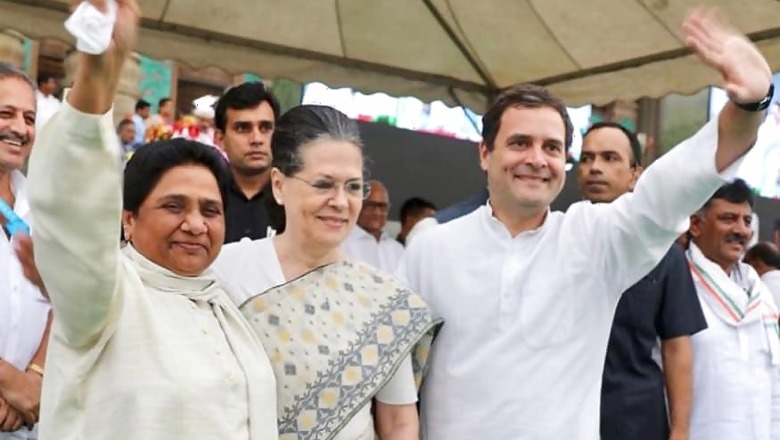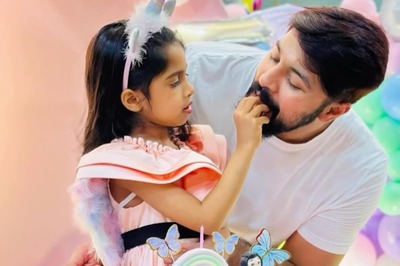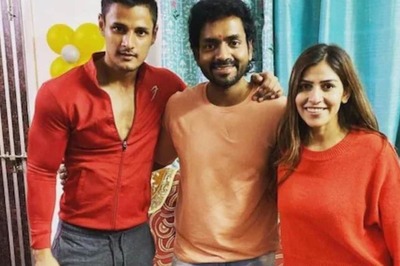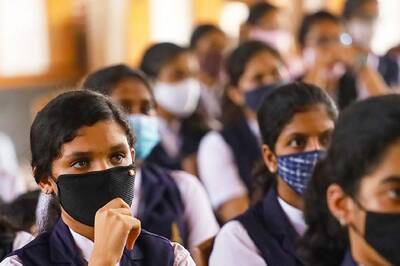
views
New Delhi: Should the Congress forge an alliance with the BSP for the coming assembly elections in MP, Chhattisgarh and Rajasthan? Or should the Congress go alone like it did earlier? The Congress and the BSP both have shown the intent to go together by forming a pre-poll alliance. The meetings and negotiations are in the process. What shape will it take only the future can tell, but if this happens, it will be a good political move which will save both the parties from untoward humiliation.
These three assembly elections will be the last ones just before the nation goes for a parliamentary one in 2019; unless the prime minister decides otherwise and holds simultaneous elections or prepones elections like Vajpayee did in 2004.
This alliance has a political background. Rahul Gandhi and Mayawati, both the leaders are in search of decisive wins over the BJP to prove their mettle. Rahul, since he became the party president, has shown the resilience to take the battle to the enemy camp but till date he can’t claim to have won the battle.
In Gujarat, he fought well and stitched an alliance of three young leaders — Hardik Patel, Jignesh Mevani and Alpesh Thakore, then took the risk of pursuing soft Hindutva by temple hopping and boldly donning his Hindu-ness. He made Prime Minister Narendra Modi and Amit Shah toil for the victory. They did win but Rahul was praised even in loss.
Then, Gandhi did not allow Modi and Shah to form the government in Karnataka. In both the states, he showed a maturity and political knack. In both the states, Modi and Amit Shah returned with their egos bruised. Politically, the message traveled that if opposition parties are willing to fight together then Modi’s march could be stalled.
The last two elections in UP have been disastrous for Mayawati. In the 2014 parliamentary elections, her party drew a blank and in the assembly elections where she was claiming that she would form the government, the BSP could win only 18 seats, an all-time low.
Serious questions were raised about her political survival. Few analysts wrote her obituary. She was virtually written off. RSS/BJP were boastful that Mayawati was only a leader of Jatavs among Dalits and rest had moved to BJP.
In UP, Jatavs comprise 11% of the total population and nine per cent belongs to the rest of Dalits. The BJP, through its propaganda and grassroots work, did try to attract other than the Jatav Dalits.
BJP’s massive emergence in 2017 assembly elections have forced her and Akhilesh Yadav to re-orient their strategies for their survival. It was this instinct which saw them swimming together in Gorakhpur, Phulpur and Kairana to victory. This model seems to be working. Now, she wants to replicate this model at the national level.
Before Mayawati emerged as a leader, Kanshiram had experimented with the idea of spreading the Dalit consciousness to states other than Uttar Pradesh. He used to hold political melas around the local Dalit icons in undivided MP, Rajasthan, Maharashtra, Karnataka, Punjab and Delhi, which helped them garner electoral dividend too.
BSP emerged as a national party, recognised so by the election commission. After Kanshiram’s demise, Mayawati forgot to do the same. Nonetheless, BSP holds many pockets in these states where it can boast of some votes.
In MP, Chhattisgarh and Rajasthan, where the BJP is suffering from a strong anti-incumbency, Congress has also realised that if it could consolidate anti-BJP votes then it cannot only mount a strong fight but can turn the tables too. If one compares the consolidated vote percentages of Congress and BSP in 2003, 2008 and 2013 assembly elections then this alliance holds an edge over BJP.
Of the three earlier assembly elections, in Rajasthan the average vote share of Congress and BSP is 40.16% whereas BJP holds 37.54%. In MP, Congress BSP averaged around 40.96% and BJP attracted 41.70% votes. In Chhattisgarh, Congress BSP managed to get on an average 43.48% vote share and BJP could only 40.21%.
This data clearly indicates that in Rajasthan, Congress and BSP are ahead of BJP by 2.60% votes and in Chhattisgarh this margin improves to 3.27%. In MP, BJP scores over Congress and BSP by .86%. Without exaggerating the data in favour of Congress and BSP, it can easily be deduced that BJP can be in trouble in all the three states if voters follow the traditional pattern.
If one analyses the vote share of 2013 elections only in these states, it can be said that BJP is way ahead than the combine by approximately nine per cent in Rajasthan, by two per cent in MP and in Chhattisgarh it is the combine which is leading by 3%.
If one reads the movement at the grassroots level, then the report becomes rather interesting. In Rajasthan, where the BJP had the maximum lead over the combine in 2013, seems to be losing the ground very rapidly and it is in real danger of losing the state.
In MP and Chhattisgarh, the battle seems to be even, it all depends upon the management of vote shares and organisational strength.
One factor which has gone largely ignored in the last four years is the phenomenal rise in the Dalit consciousness across the country. There is an anger against the BJP and Modi regime due to the treatment meted to the Dalits by the BJP governments in the states and indifference shown by the Modi regime.
The ban on beef eating, the beating of Dalits in Una, the suicide of Rohit Vemula in Hyderabad, the violence inflicted upon Dalits in Bheema Koregaon in Maharashtra, the caste riots in Saharanpur between Rajput and Dalits, arrest of Dalit leader Chandrashekhar Azad under NSA and dilution of SC/ST act by the Supreme Court has infuriated them. The angry young Dalit leaders have emerged. Jignesh Mevani and Chandrashekhar Azad are two such examples. The massive march of Dalits to Mumbai to protest against the Dalit atrocity was an eye opener.
Similarly, after many years the country witnessed a successful Bharat bandh in April. It was unprecedented in the sense that the call for the Bandh was not sponsored by any political party or any Dalit organisation. The message was circulated through the Dalit social media groups. The response was overwhelming. It was spontaneous and mind blowing. This shows that there is a sense of great unease among Dalits.
The rise of militant Hindutva has generated reaction among them. Social media has provided them the space where they can ventilate their anger and interact with other groups for the same cause. Hundreds of websites have come into existence which are revolutionising the minds of Dalits. Surprisingly, this phenomenon has gone unnoticed. But in electoral politics these groups have no organisation of their own. This is an opportunity of Mayawati.
She is the only Dalit party which has substantial base and formal structure in place. Congress has apparently realised the potential of this narrative. The talk for alliance with Mayawati is reflection of this realisation, it’s an attempt to tap the anger among Dalits.
With minorities feeling alienated, the mobilisation of anger among Dalits could prove to be the trump card for Rahul Gandhi. Mayawati can be the vehicle. So coming together of these two leaders is of mutual benefit to both and reason for tension in the Modi camp. Because if they succeed then the BJP will definitely have a tough time in the assembly elections and if the pairing of the two could upstage BJP then it will have serious and interesting repercussions in 2019.
(The author is an Aam Aadmi Party leader. Views are personal)


















Comments
0 comment